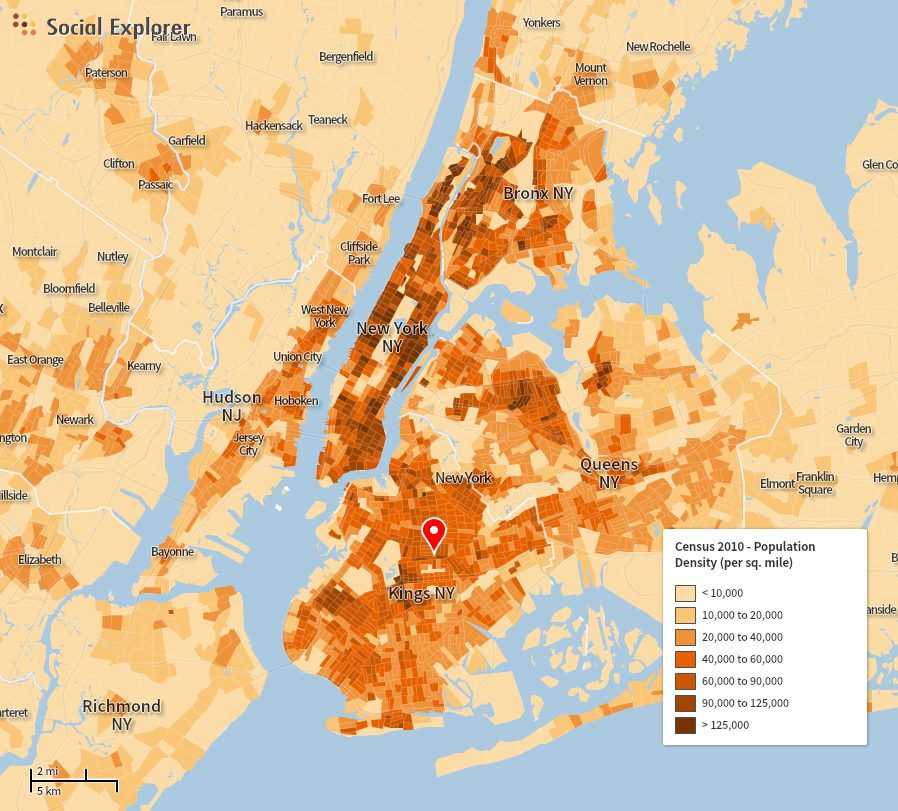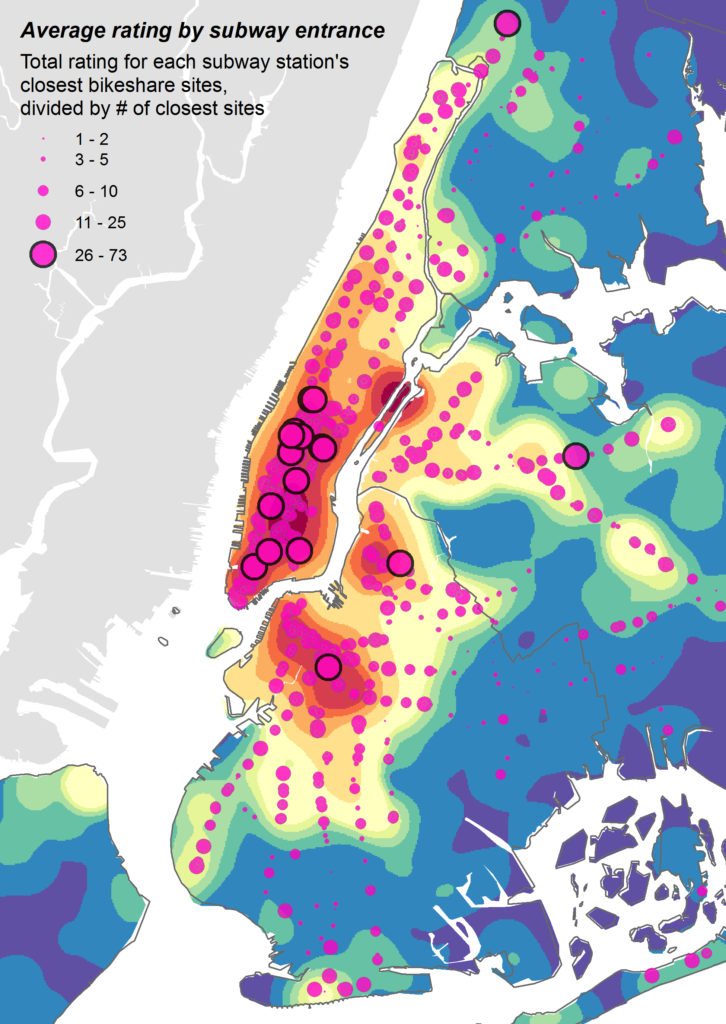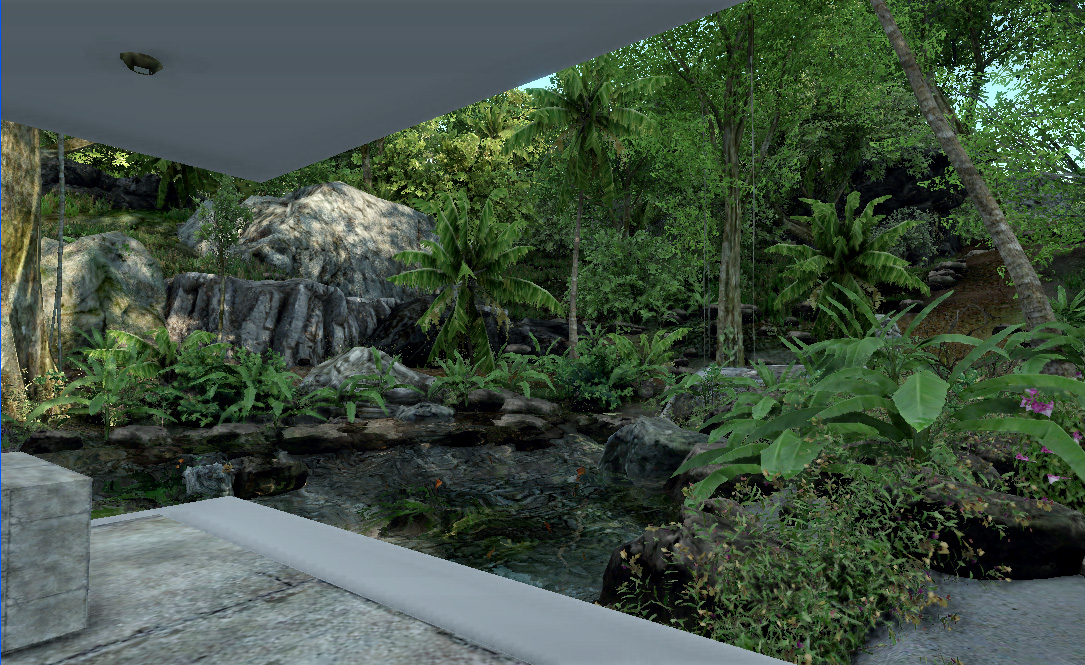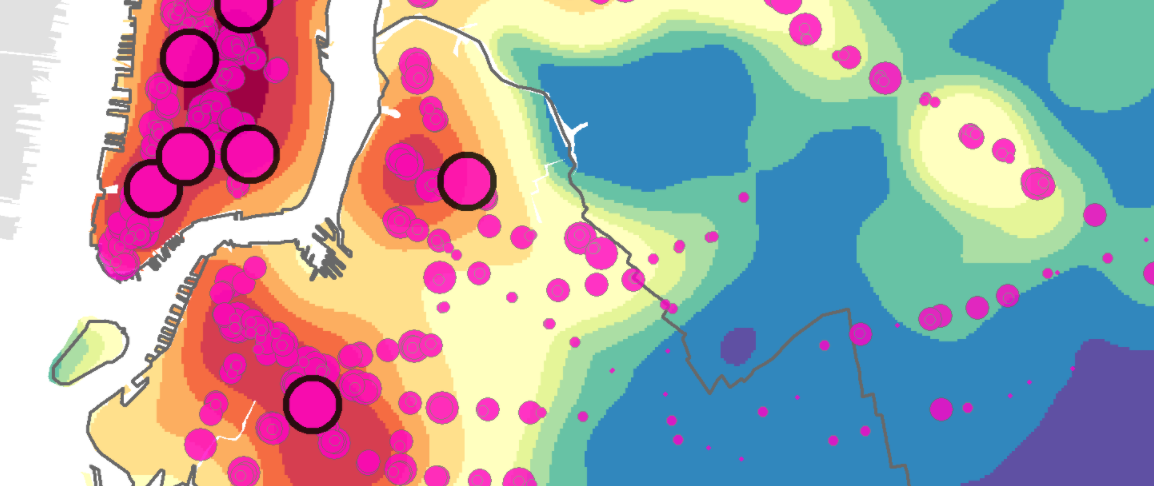A followup on the SimpleTwig article ‘Time, Not Distance, Determines Development of Cities‘ we need to take a moment to review the existing density of New York City, as an example to show that people reside in the area that physically puts them closer to where they work, in this case Manhattan. While this is probably obvious to most, one can not assume everyone understands the organic growth of cities.
While it would be nice for everyone to live and fit in Manhattan, or for that matter in a location that has a view of it’s beautiful skyline, it isn’t always possible given the cost of property, and, the lack of availability of housing stock. This means, with an ever growing population, alternatives must be addressed.
This article assume a general knowledge of how cities have developed, but if not a little history: our urban cities post the Roman period grew as radiating roads converging on a town center, with concentric rings to connect the parts as the city grew. This was replaced by a generic American ideology of the street grid which could lay over the terrain and expand endlessly. This has been slightly modified in new cities around the world which take into account some terrain features, but, as I believe basically misunderstands what makes cities desirable and great. And in today’s world we have its extension, where new cores are popping up outside of a main CBD, much like I refer to, but with little urban master planning, like the city of Newark, NJ, or downtown Brooklyn, which are new cores connected to Manhattan and are competing for recognition and attention as an alternative location for business and residence. If anything, these new cores are a natural growth of a city based on forces like economics, need, zoning and localized approaches to relieve stress on the core. They achieve little in respect to efficiency as they are often crammed into areas that barely can support their high density, thus result in new stresses on infrastructure, security, transportation, energy, etc. and thus achieve little except as a stop-gap measure.
Further, political solutions like what Mayor Bill De Blasio is attempting to address in our housing shortages and high living costs, by creating new housing units, whether they’re part of an integrated ‘percentage of market rate housing’ or completely new buildings devoted to affordable housing, achieves little when the need is so great by virtue of high property and construction costs limiting what can be accomplished. All efforts including mild zoning changes are stop-gap measures at best. One example of the stress real people are feeling is the 800,000 people applying for 10 available rent stabilized units in a new residential building. Other studies are showing an increasing number of people moving out of the city (Moving out: New York number one in population loss category), which could be for a variety or reasons but one must admit that if all was well in the city they would stay put.
Given that New York City supports around 10 million people, 8 plus living in the city, and the world population set to double in 20 years ± it is clear that an ‘elderly planned city’ will have to make adjustments in order to be a viable world leader for tomorrow. This means massive infrastructure changes that will accommodate a city of 20 million or more.
This means, the current city of 10 million will have to change its attitude in order to double its size, that the current urban model, which is currently failing, and, is outdated based on 19th century housing types, will have to embrace a new approach of housing and urban living model that embraces the characteristics and needs most humans must have, and which we address in a series of articles if time permits.
Counter to this need is imperative desire to identify those area which must not be harmed, because their character and quality warrant protections. The identification of ‘saved neighborhoods’ will in turn identify areas which could be upgraded. Why? It is imperative to not erase those components whose character is both desirable and a icon for the city, keeping in mind the need for variety and depth of representation, least we see how Beijing has wiped out many historical districts which has erased some of their identity and desirability, no matter how inefficient it might have been. In this respect, the boundaries of these ‘special area’ should be reinforced with either related character structures or modern structures of quality (for it is contrast that allows us to see clearly).
In this article, I will focus on current populations, and the links (MTA Subway System) that connects them, hopefully with my own available time indicate area which might be used for new hubs of urban density connected to the central CBD of Manhattan by a new system of ‘super express’ transportation systems. As noted, the ‘super express’ is like a bullet train, that moves people from one major hub to another without interruption and at a high rate of speed, to make practical the new hubs remote location, and allowing the new hub to act as a hub for further expansion of the subway system. In this respect, but not related to what I am arguing within this and other articles, is the similar need for Long Island Express, Hudson Lines, and New Jersey Transit, to be connected to new major hubs beyond the local transit system that slows down the commuter to times that are essentially unacceptable (no one should spend more than 1 hour commuting from from a residential location to a major CBD hub).

In the map above, there are a few things to note. For areas less than 10,000 people per square mile, those areas are either a park, or industrial areas, except where they are near water which may imply single family homes. The greatest residential areas in NYC are the Upper East and West sides, and parts of Mid-town, Bronx and Queens. One can also see that parts of the East River in Queens and Brooklyn have a higher density as does much of Brooklyn. Clearly parts of New Jersey, Staten Island and portions between Queens and Brooklyn could be developed more. Other factors that limit desirability include airports like LaGuardia and JFK, or low lying areas susceptible to flooding.
While living in Manhattan, or having views of the skyline are the highest desirable locations for a resident, once one has given up on this given other factors like cost, or even the desire to live in a less hectic or more safe area, perhaps with more interior and exterior space, the one driving factor to determine a place to live is location relative to the time it takes to commute. If one has given up on working in Manhattan, or had no desire to do so, then there is a time/distance which makes Manhattan relatively irrelevant.
In the following map, developed for Bike Share purposes, one can view how subway stations are used by population and clearly see that there are fewer users as one moves away from the Manhattan core. This reinforces the notion that those who live further away, and thus would take longer to commute, would opt against working in the city or in an area that requires the use of the subway. Another way to view this, in relationship to time, is the further out one lives the more stops the train must take, and thus make the commute much longer than those living closer to Manhattan. It echoes humanities tolerance for commute time and the alternative choices we will make in order to have a fulfilling life. Alternatively, there are people living in Manhattan in shoe boxes, or in shares with too many people, or in cut up buildings that are fire traps, all indicators of a real problem.

One can see in the above map the extended cores in Brooklyn and Queens, as well as very underutilized areas in blue and purple. One should also note the density as it relates to subway stations.
What it shows is the potential of the land that is underutilized in this major metropolis area, that with careful selection of new satellite cores one can accommodate more people without adding more time to their commute eliminating a major factor in home selection location and relieving the stress currently design communities are feeling. Careful selection of locations could incorporate existing urban assets like a college/university, a marina, special views, a shopping mall, or some other significant infrastructure or natural element helping give the new core both identity and desirability.
Our next article will study the basic NYC urban block that we have been stuck with, and whether it is has reached a point of burden and inefficiency for the city. While in many neighborhoods it has worked, there is a serious lack of variety in Brooklyn along with a severe shortage of park facilities within many neighborhoods leaving millions trapped in a human-made concrete jungle with little or no relief. Written as a natural extension to this and other articles, we hope to show a different approach to urban planning, infrastructure and efficiency which will provide residents with both a greater variety of residential types to choose from but also provide things like green space, ease of commute and other features that are often sacrificed in the urban plan. The goal, to meet human needs for privacy, independence, a sense of pride in where one lives, open space, security, flexibility in living over a life-time, up and downsizing, etc. In this respect, NYC’s typical grid is woefully inadequate, seeking to only build homes from a ‘construction efficiency’ point of view from a time when indoor plumbing was a luxury, and little else.
It should be noted, that it is my feeling that green areas are vital for a positive human experience in everyone’s own life, providing as a balance to urban life as important and essential as providing light and air. In urban areas this can be a challenge, especially if people are tripping over one another within a coveted park. And while some homes have a backyard, most apartments have little or no outdoor space. There is also, in my mind, a need to define a city with a border of untouched natural areas (to help define the extent of a city, give it definition, provide orientation, to save and value the land we use), thus not allowing cities to sprawl forever, but if necessary, to provide a gap between sections of urban growth with a natural ring around the city. Within the confines of an urban environment like in Brooklyn, as compared to Boston, has very few parks for its residents (see previous article) so this is yet another issue. In the end, an urban approach which focuses on efficiency of urban environments, residential needs, infrastructure, utilities, hierarchy/variety and transportation can result in more land being available for green spaces while lessoning the burden on city taxes needed to maintain all of the components to make everything work.
I write these articles in the shortest amount of time possible, because my focus is on my architectural practice and family, so if you see mistakes, and I’m sure there are many, please leave a comment so I can revise it. I do my best, but there are priorities and I’m not really sure anyone is actually reading anything I publish, so that is also a factor. Still, I can see what needs to be done, and how complex a problem it is, so feel compelled to address these issues as a way to create better living conditions for people.
I am also sorry to leave so much of what I say in vague terms, like infrastructure or whatever is mentioned, that while I have specific ideas based on the lower cost of construction due to scale of a project, given my short time to compose these articles I have to address each item within the article, letting the reader put it altogether themselves. But in this respect, I will quickly touch on some items that would comprise some of the puzzle pieces of an urban approach that would be highly desirable yet have a lower burden on a city… Fewer street, or private streets that have less traffic (safer, less need to replace); dedicated utility raceways, sewer, water, gas, cable, electric and potential for future needs, within their own tunnel(s) to allow utilities to never dig up a road again, but instead allow them to travel off main road inside their own service roads; infrastructure for buildings built by the government, sold to individual investors/architects, to provide party walls, earthquake proof structures, solar energy, urban/community/street design including more outdoor space; to provide more owner occupied dwellings with supporting rental units of a variety of sizes and dispositions; to design more useful inner block spaces with kid/family-friendly shared amenities; to provide off-street parking structures to eliminate street cleaning issues, to make trash pickup more efficient, to lower pollution and the need to find an alternative parking space, to drop road usage, to make deliveries efficient and less dangerous (double parking), to make secure (less property damage or theft); to create bypass avenues for traffic which have no intent on stopping in certain areas, but instead to make their commute as efficient as possible to ‘get their vehicle off the road;’ to create urban hubs which are both dense commercial areas but also dense residential areas to cater to the needs of humans for a heightened experience of urban interaction; and so forth.


great ideas. good read.
Thanks Genevieve, I’m barely scratching the surface and this is more of a preface than anything. Most of my articles are rushed and published, doing business being the priority, but it’s always nice when someone comments.
Since the late 19, and particularly in the early 20, the population has been expanding at a much faster rate, with town rejuvenation, new retail and entertainment facilities and many new housing developments.
You’re right, the population is rapidly increasing, so much so there’s a good chance there will be massive shortages in housing, especially if a city like New York gets flooded with people looking for opportunities. While NYC hovers at around 10 million, it could easily balloon to 20 or 30 million in 15 to 30 years, and that’s not much time to double the capacity of the city. Thanks for the comment.